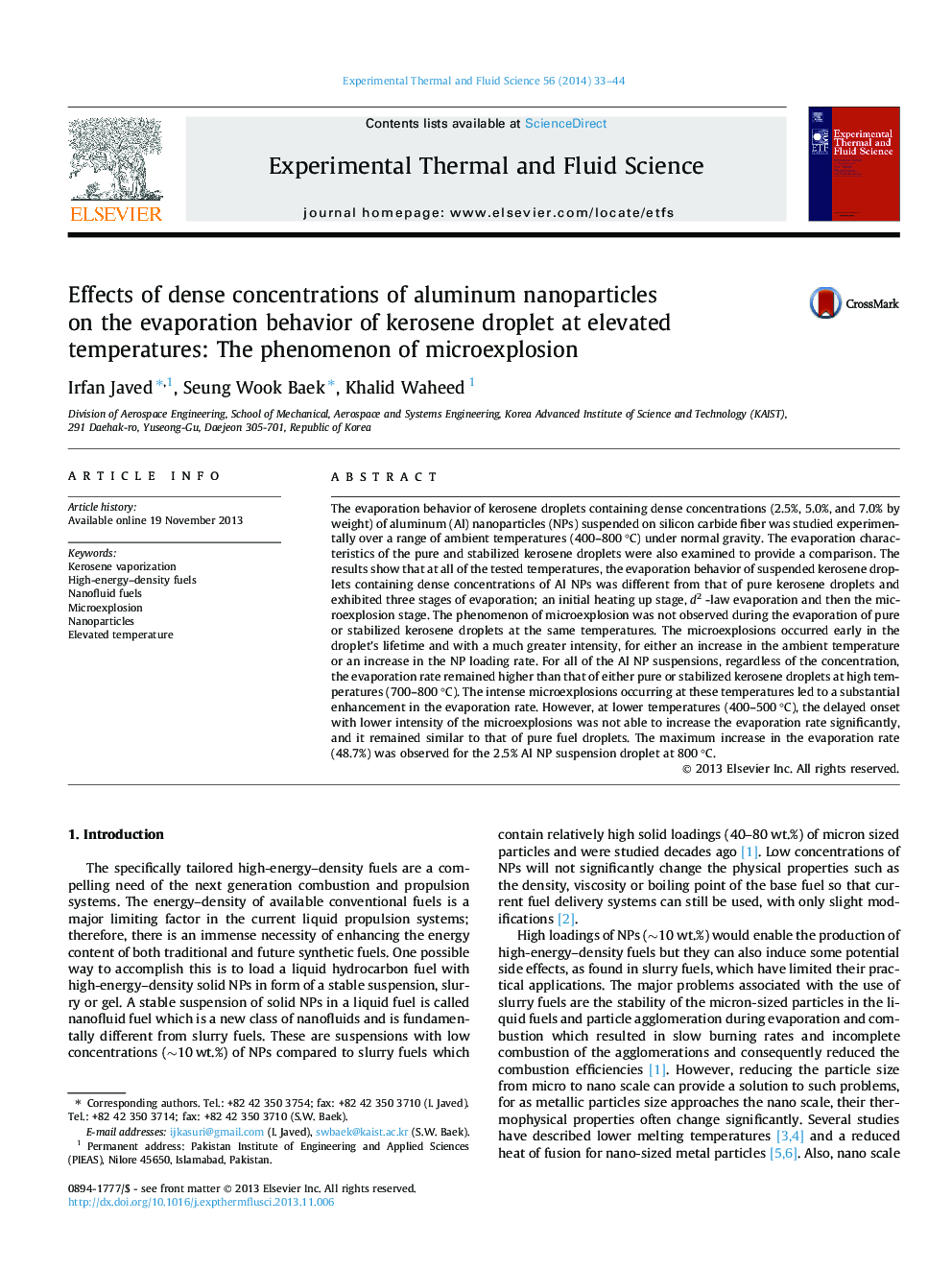| کد مقاله | کد نشریه | سال انتشار | مقاله انگلیسی | نسخه تمام متن |
|---|---|---|---|---|
| 651688 | 1457420 | 2014 | 12 صفحه PDF | دانلود رایگان |
• With high loadings of Al NPs, kerosene droplet exhibited microexplosions at 400–800 °C.
• Higher temperature or NP loading rate led to earlier and intense microexplosions.
• Microexplosions were more affected by increase in temperature than NP loading rate.
• Intense microexplosions at 700–800 °C enhanced the evaporation rate substantially.
The evaporation behavior of kerosene droplets containing dense concentrations (2.5%, 5.0%, and 7.0% by weight) of aluminum (Al) nanoparticles (NPs) suspended on silicon carbide fiber was studied experimentally over a range of ambient temperatures (400–800 °C) under normal gravity. The evaporation characteristics of the pure and stabilized kerosene droplets were also examined to provide a comparison. The results show that at all of the tested temperatures, the evaporation behavior of suspended kerosene droplets containing dense concentrations of Al NPs was different from that of pure kerosene droplets and exhibited three stages of evaporation; an initial heating up stage, d2 -law evaporation and then the microexplosion stage. The phenomenon of microexplosion was not observed during the evaporation of pure or stabilized kerosene droplets at the same temperatures. The microexplosions occurred early in the droplet’s lifetime and with a much greater intensity, for either an increase in the ambient temperature or an increase in the NP loading rate. For all of the Al NP suspensions, regardless of the concentration, the evaporation rate remained higher than that of either pure or stabilized kerosene droplets at high temperatures (700–800 °C). The intense microexplosions occurring at these temperatures led to a substantial enhancement in the evaporation rate. However, at lower temperatures (400–500 °C), the delayed onset with lower intensity of the microexplosions was not able to increase the evaporation rate significantly, and it remained similar to that of pure fuel droplets. The maximum increase in the evaporation rate (48.7%) was observed for the 2.5% Al NP suspension droplet at 800 °C.
Journal: Experimental Thermal and Fluid Science - Volume 56, July 2014, Pages 33–44
